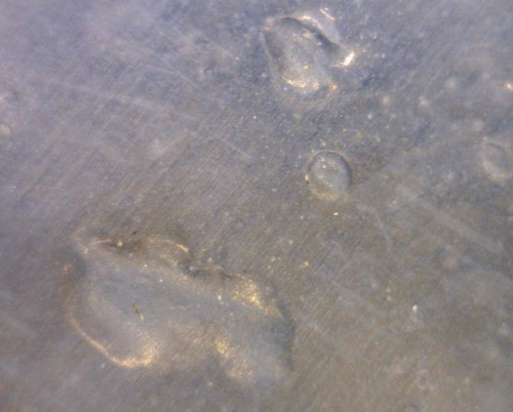If you find blisters on your die casting parts, corrective action should be taken to prevent further blistering and ensure the quality of the final parts. Let’s check out the die casting blisters defects causes, effects, solutions and more.

What Are the Blisters in Die Casting? - Blisters Defect Causes
In die casting, blisters are defects that can occur on the surface of the finished product. Blisters are caused by pockets of gas or air trapped in the molten metal during the casting process. When the metal solidifies, the trapped gas expands, forming rounded or irregular bumps on the surface of the part.
There are several factors that can contribute to blistering, including:
1. High moisture content in the lubricants or other materials used in the process.
2. Inadequate venting of the mold cavity, which can trap pockets of air in the molten metal.
3. Excessive metal temperature, which can cause the release of gas from the lubricants or other materials used in the process.
4. Overheating of the metal in the mold, which can cause gas to be released and trapped in the molten metal.
How to identify Blisters on die casting parts
Blisters on die casting parts can usually be identified visually by their characteristic appearance. Here are some ways to identify blisters on die casting parts:
1. Raised bumps or rounded areas: Blisters usually appear as raised bumps or rounded areas on the surface of the part. They are often irregular in shape and may vary in size.
2. Uneven surface texture: Blisters can also cause an uneven surface texture on the part, with an irregular or rough surface in the affected area.
3. Cracks or breaks: In severe cases, blisters may cause cracks or breaks in the surface of the part. This can be more difficult to detect and may require closer inspection.
4. Hollow or thin-walled areas: Blisters can also cause hollow or thin-walled areas in the part, as the gas or air expands during the casting process and creates voids or thin spots.
5. Sound or tap test: A sound or tap test can be done to detect if there is blistering or porosity in the part. This involves tapping or bumping the part and listening for changes in sound, which can indicate areas of weakness or defects in the part.
Effects of Die Casting Blisters
Blisters in die casting can have several negative effects on the finished product. To minimize the negative effects of blisters in die casting, you need to implement appropriate quality control measures during the casting process, including proper mold design, adequate venting, and consistent metal temperatures. By taking these steps, manufacturers can help ensure that their die cast products are of the highest quality and free of defects.
1. Appearance: Blisters can affect the appearance of the finished product, creating unsightly bumps or irregularities on the surface. This can make the part less attractive or aesthetically pleasing, which can be especially problematic for consumer products where appearance is important.
2. Mechanical properties: Blisters can also affect the mechanical properties of the finished part by creating weak spots or defects that can compromise its strength and durability. This can lead to premature failure or reduced performance, which can be particularly problematic for industrial or heavy-duty applications.
3. Functionality: Blisters can also affect the functionality of the finished product, especially if they occur on critical surfaces or areas. For example, blistering on a mold for a precision electronics component could lead to poor fit or electrical contact issues.
4. Scrap Rates: Blisters can increase scrap rates in the casting process, leading to higher production costs. Any parts that do have blisters may need to be reworked or scrapped completely, which can be time-consuming and expensive.
How to Avoid Blisters in Aluminum Die Casting?
1. Proper venting: Effective venting of the mold cavity is crucial to prevent the formation of blisters in aluminum die casting. Venting allows any air or gas to escape during the casting process, preventing it from being trapped in the molten aluminum and forming blisters. Designing and positioning vents in the mold correctly is critical for effective venting.
2. Optimizing metal temperature: Controlling the temperature of the molten aluminum is key to controlling blister formation in casting. Overheating the metal can cause the release of gas from the lubricants or other materials, creating blisters. Similarly, cool temperatures can make the aluminum less fluid and create porosity issues. It is important to monitor and control the metal temperature during the casting process.
3. Use of proper lubricants: The use of lubricants, such as release agents and die lubricants are vital in the die casting process. It is important to select the right lubricants with low moisture levels, and ensure that they are applied in the right amount and at the right time. Proper use of lubricants can help prevent the release of gas and subsequent blistering.
4. Avoiding moisture in materials: Moisture can be a source of trapped air or gas pockets that can lead to blister formation. Moisture should be minimized wherever possible, such as the lubricants, die cooling system, and the use of water spray in the casting process.

